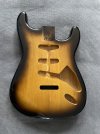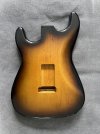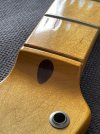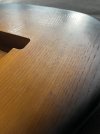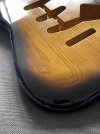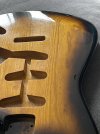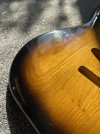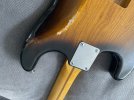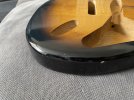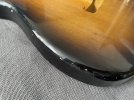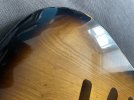Andy Eagle
Fractal Fanatic
I will go in to doing a vintage tobacco bust a bit before I show pictures if this one (when it's done.)
The paint I use for this in not fully opaque so getting the solid part solid without runs ends up being the issue. You just can't help yourself putting on a bit much in one go the first time you do it. The better way IMO is to try to put two coats on only the edge before you attempt the burst part. If you want to see how this is done on video look at some of the fender custom shop things on Insta. Fender even paint a black edge with solid paint under the tobacco tint sometimes ( I don't like this but it makes it a lot easier.)
When you have a reasonable edge (nearly solid) you can start going around the burst . You should do it in a few passes getting better each time and evening it out where it needs it. Practice is the thing for this , if you wanted to try it I would suggest you paint at least one other thing in sunburst before a guitar body unless you like sanding. Also if you get a run or make a mistake you MUST let it dry completely BEFORE you try to fix it in any way. Nitro is your friend for this as it can be fixed and extra bits and touch ups melt together invisibly.
The paint I use for this in not fully opaque so getting the solid part solid without runs ends up being the issue. You just can't help yourself putting on a bit much in one go the first time you do it. The better way IMO is to try to put two coats on only the edge before you attempt the burst part. If you want to see how this is done on video look at some of the fender custom shop things on Insta. Fender even paint a black edge with solid paint under the tobacco tint sometimes ( I don't like this but it makes it a lot easier.)
When you have a reasonable edge (nearly solid) you can start going around the burst . You should do it in a few passes getting better each time and evening it out where it needs it. Practice is the thing for this , if you wanted to try it I would suggest you paint at least one other thing in sunburst before a guitar body unless you like sanding. Also if you get a run or make a mistake you MUST let it dry completely BEFORE you try to fix it in any way. Nitro is your friend for this as it can be fixed and extra bits and touch ups melt together invisibly.
Last edited:

